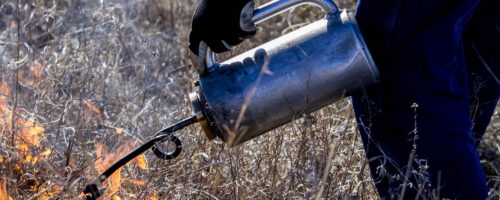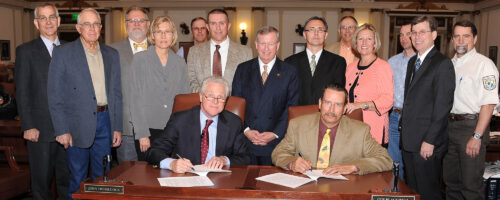Grazing management benefits cattle and deer
Grazing lands provide forage for livestock, habitat for wildlife and recreational opportunities such as hunting.
Ranchers continue to face tremendous challenges with drought and increasing input costs. This has led many to seek alternatives that are both ecologically sustainable and economically feasible to keep their operation going. Grazing lands provide forage for livestock, habitat for wildlife and recreational opportunities such as hunting. The assessed value of a ranch based on aesthetics and wildlife habitat or its recreational opportunities can often exceed the property’s agricultural value. This provides additional economic incentive to apply effective grazing management.
Many operations have not capitalized on the integration of cattle and a wildlife enterprise often because they don’t know how to successfully manage both. One challenge is the amount of resources needed to manage both cattle and deer. Cattle complement deer habitat when they are stocked at the proper rate and managed with a grazing system that allows for periodic rest. However, it is impossible to maximize both cattle production and deer habitat.
Aldo Leopold, the father of wildlife management, often referred to the “cow” as an effective wildlife management tool. Cattle can be used as a tool to enhance deer habitat by manipulating plant diversity and structure. The main role of grazing in a deer management program is to reduce the quantity of grass. This allows sunlight to reach the lower growing forbs, many of which are important deer foods. Furthermore, this creates more structural diversity, which helps to improve habitat for other game and nongame species.
The way you graze a pasture with cattle affects how the wildlife use it. It’s easy to let native grasses get too mature and limit the food available to deer. Grazing keeps the grasses young, tender and higher in protein, which is better for cattle. Deer, to some degree, utilize areas after cattle grazing, so we’re using the cattle to create deer food (forbs). Cattle prefer grasses; however, cows can eat up to 15 to 30 percent browse and forbs. If you have a 1,150-pound cow, that’s 5 pounds per day of forbs at 15 percent of their daily intake about what one deer eats. When improper stocking rates or poor grazing management occurs, grasses become limited and cattle can shift their diets up to 70 percent towards forbs and browse. At this level, cattle will compete directly with the deer for browse and forbs.
Key grazing and deer management practices include:
- Stocking rates: Balance livestock numbers with available forage. Light to moderate stocking rates are ideal, allowing for flexibility to respond to drought, proper fuel load accumulation for prescribed burning, reduced supplementation for cattle and a reduced need for “weed” control.
- Monitor: Careful, regular evaluation of the habitat and vegetation will benefit cattle, deer, other wildlife and the land.
- Rest: Defer pasture through a grazing system to allow plant recovery.
- Prescribed burning: Burning can promote an increase of native perennial grasses and forbs, enhancing habitat for deer and a wide variety of wildlife species. It will also help reduce the invasion of invasive woody species such as Eastern red-cedar onto rangelands.
- Harvest management: Overpopulation of deer will stress the plants that benefit them and other wildlife. A yearly deer census needs to be conducted to determine deer harvest strategy.
It is very important that land managers understand the basic ecological principles of plant succession, plant growth, water, mineral and soil cycles that affect rangeland, deer and grazing management. A thorough knowledge of deer habitat requirements, food habits, population dynamics, life history and biology is fundamental to managing the ecosystem.
The ax, plow, cow, fire and gun continue to be important tools land managers can use to manage habitat resources for deer and cattle. Although you may be focused on cattle and deer management, remember that single species management deserves less attention, while the system in which they live requires more.



Comment